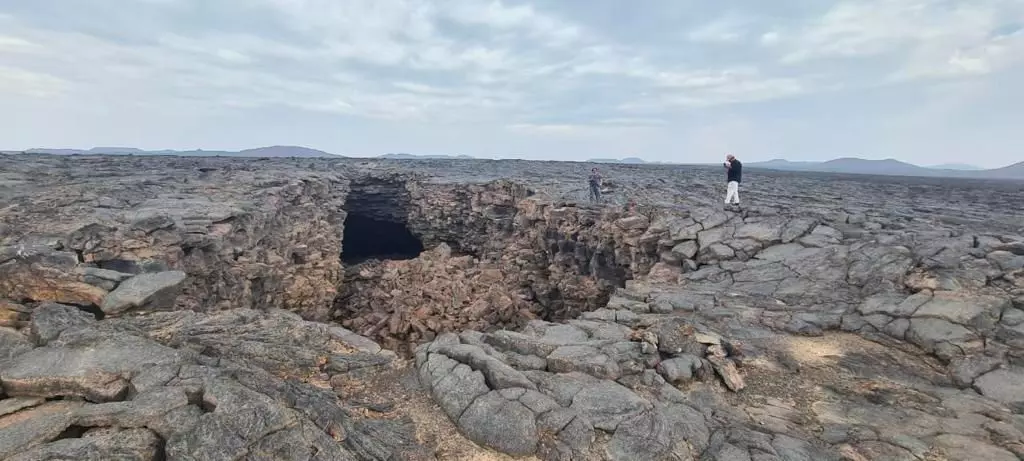Saudi Arabia's Abu Al-Waul Cave Approved as New Geological Tourist Destination
Five-kilometer basalt marvel in Khaybar Mountains joins growing roster of geotourism attractions in the Kingdom

RIYADH — The Saudi Geological Survey (SGS) has given its approval to Abu Al-Waul Cave, the longest cave in the Kingdom, to be developed into a geological tourist destination. Located in the volcanic Khaybar Mountains northeast of Madinah, the cave will be nominated as a tourist attraction once technical studies are completed.
A specialized geological team from the SGS documented the cave, which stretches approximately five kilometers in length, making it the longest basalt cave in Saudi Arabia. The cave was named Abu Al-Waul due to the presence of numerous Ibex skeletons found within it.
Tariq Aba Al-Khail, spokesman for the SGS, highlighted the significance of the cave as a tourist resource that will enhance the geopark projects undertaken by the Geological Tourism Department of SGS. The cave will also provide valuable opportunities for research and academic work in this field.
The Khaybar Free Zone, encompassing approximately 21,500 square kilometers, is the largest free zone in Saudi Arabia. The Kingdom's free zones cover around 89,700 kilometers, constituting 4.6 percent of the country's total area. With 23 main large free zones and a number of smaller ones, Saudi Arabia hosts the highest number of free zones among Arab countries.
Harrat Khaybar, within which the Abu Al-Waul Cave is found, features three unique volcanoes: Jabal al-Baydaa, Jabal al-Abyad, and Jabal Al-Mansaf. They are characterized by their rare volcanic rocks, which are light gray acidic volcanic materials containing volcanic glass. These volcanoes, which erupted thousands of years ago, have attracted explorers, researchers, enthusiasts, and tourists from around the world.
The region boasts numerous caves, each holding historical secrets, that have become popular attractions. Some of these include Umm Hashiwi Cave, Makir Al-Shayahin or Makir Al-Suqur, Umm Jarsan Cave, and Umm Goraimeel Cave.
Jabal Al-Qadr, situated in Harrat Khaybar in the Madinah region, stands approximately 400 meters tall and is one of the largest volcanic fields. The volcano erupted about 1,000 years ago, leaving behind a unique and captivating landscape that has been recognized as one of the world's most beautiful geological monuments by the International Union of Geological Sciences (IUGS) and the United Nations Educational, Scientific and Cultural Organization (UNESCO).
The Saudi Vision 2030 emphasizes the utilization of caves for tourism purposes, benefiting the national economy and promoting awareness of the Kingdom's natural wealth. Efforts are already underway to discover more sites and opportunities that will contribute to the flourishing of desert eco-tourism on a large scale.
Adjust Story Font
16


